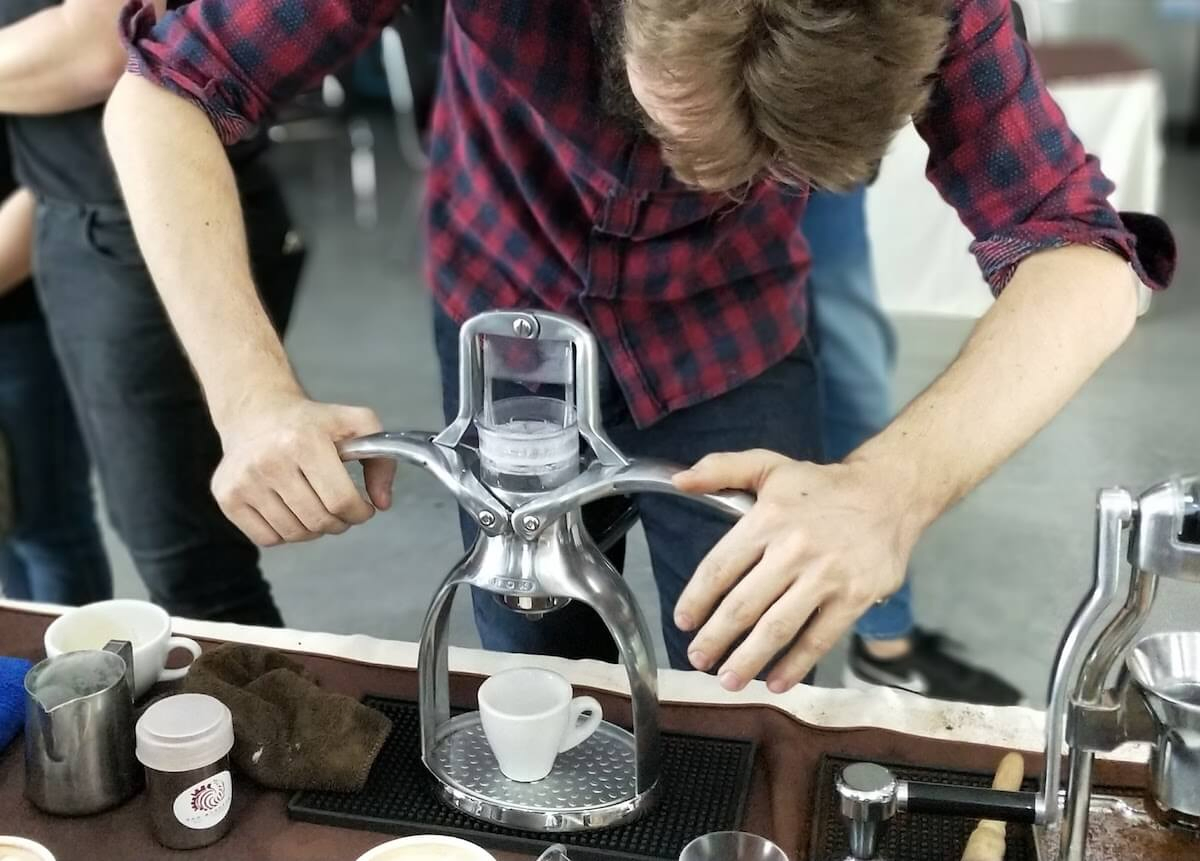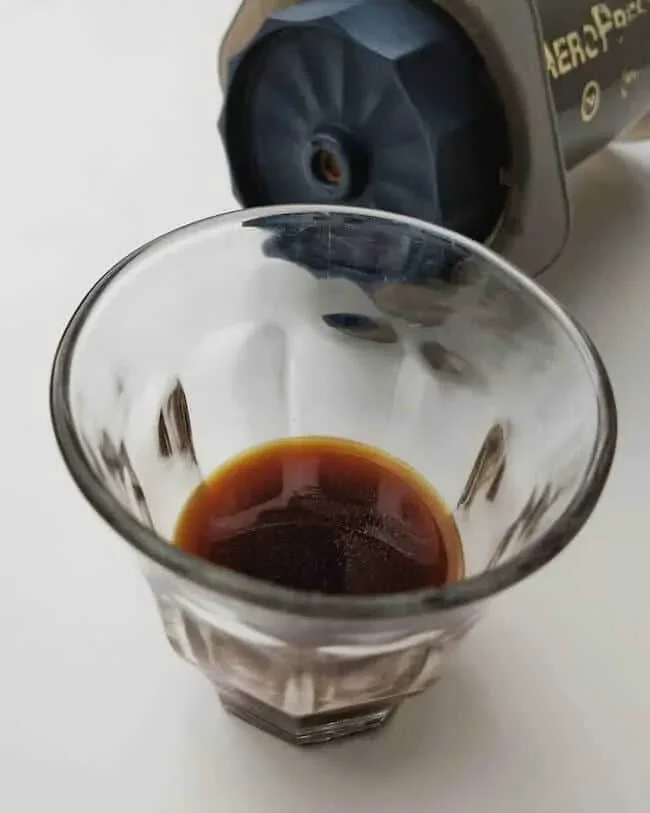Espresso is not like making regular coffee… it’s messy and complicated.
You’d probably do yourself a favor by leaving it to the pros.
The thing is that espresso is a rather tricky craft to master. It requires attention to detail as well a serious investment of time and money.
But luckily for you, I have made all the mistakes. Here’s your cheat sheet for great espresso.
Before we get started
Always use fresh Beans
You need some relatively freshly roasted coffee beans. Dark or medium roast? It’s really up to you. Same goes for whether you should choose a blend or single origin.
When it comes to the beans, it’s an area where you should experiment. Some people love an Italian espresso blend with robusta mixed in, while others adore the fruitiness of a medium roast natural processed arabica.
Light roasts as espresso can taste delicious. However, this is the coffee World’s version of free jazz. Most people still prefer the Billboard Hot 100
Ideally, your coffee beans are not too fresh and not too old. Between 4 and 21 days after roast usually works great.
No matter how skilled you are as a home barista, if the beans you are using are of poor quality, the end product will be disappointing. It is essential to take the time to learn about different types of coffee and how to assess its quality.
However, because espresso is such a strong beverage compared to other types of coffee, you should choose a coffee that is less acidic since everything will taste more concentrated.
That often means coffee grown at a lower altitude or a slightly darker roast profile.
A few avant-garde coffee snobs enjoy light-roast shots that are almost like lemon-juice but I’m not one of them… and I bet the same applies to you.
Use Soft Water
When it comes to water and regular coffee a lot can be said. However, many of these principles don’t apply to espresso the same way.
With espresso, you also have the longevity of your machine to consider. For that reason, you should always use soft, odor-free water. Bottled or filtered water will be your best bet.
Avoid (tap) water with much calcium as it will cause scale to build up. Most espresso machine breakdowns are due to scale!
Equipment
You also need some well-built equipment if you want to pull a proper shot. First of all, you need a quality espresso grinder. This is non-negotiable.
Secondly, you need a good home espresso machine – preferably one with a non-pressurized portafilter.
That being said, nowadays, there are few ways to make good espresso at home without a big electric machine, for example, the Cafelat Robot or Flair Pro.
How to make espresso at home
- Turn on the machine: Your machine should have at least 10 minutes to reach the proper brewing temperature. Longer time if you have a heavy, old-school one.
(Sidenote: A few of the new models from Breville start up in seconds, since they don’t have a big boiler to heat, but rather a thermo coil.) - Measure the coffee: Use a scale and measure your dose. If, you’re making a double shot 18 grams is usually a good place to start. However, this also depends on the size of your basket. (If your grinder is dosing by time or weight, you calculate this when loading a new bean.)
- Grind: Find the right adjustment on your grinder. Continually monitor this step every time you change coffee beans, or if the beans have been sitting in the hopper for a while.
- Dose and distribute grounds: Dosing is important. Don’t grind directly into the portafilter. It’s usually better to grind into a separate dosing cup or blind shaker.
Tap the bottom of the filter lightly a couple of times to help the grounds settle and avoid air pockets. Be careful about this step – it can affect the extraction of the shot. You can also use a modern leveler/distribution tool to help you with consistency or a special WDT tool.
If you ask me, however, crema is an essential component of a proper espresso. It not only looks beautiful, but it also tells you that you have done an excellent job extracting under the correct pressure. If you only see a thin or weak crema, it could be a sign that your coffee is too old, or that too little pressure has been generated while brewing.
how to make espresso without a machine
Is it possible to make espresso without a machine? It’s a tough question that I’d answer with an ‘it depends.’
You can get some non-electric manual contraptions that make great espresso with crema and a decent amount of pressure. These usually rely on levers that help force the water through your coffee puck.
You can read more about these models in this post.

Can you make espresso with a French press?
Sometimes new crazy ideas are invented by click-hungry sites. One of these ideas is that you can make espresso with a French press.
Of course, that’s total BS. Let me quickly explain why…
Espresso has a few non-negotiable traits:
- It’s brewed under pressure. It doesn’t have to be precisely 9 bars like some people claim, but it should be in that range. A French press plunger doesn’t do anything at all when it comes to creating pressure. The only thing it does is to help separate water and grounds.
- Espresso should have crema and with a french press that’s not gonna be the case.
Other ways to make espresso at home
A few years ago, a device called the Prismo was launched by the American coffee brand Fellow.
The Prismo is an accessory for the Aeropress that sort-of turns it into an espresso maker.
Instead of a regular lid, you screw on the Prismo, which has a pressure actuated valve.
I own the Prismo and generally like it, but I wouldn’t call it true espresso maker. First of all, even though some pressure is generated, it’s far from 9 bars. Maybe 1 or 2.
However, the resulting coffee is exceptionally concentrated and makes an excellent substitution for espresso in stuff like cappuccinos, lattes or ice americanos.
More recently, the Joepresso was launched on Kickstarter. I had a chance to review it and think that it’s a way more capable alternative to the other so-called ‘Aeropress Espresso‘ methods out there.
Lastly, we should touch upon the Moka pot, sometimes called the stovetop espresso maker. While this device relies on pressure and generally produces a powerful and concentrated cup of coffee, I still wouldn’t call it real espresso since it lacks crema and only brews at 1,5 bars.
Similar to the Prismo, this coffee does work well with milk, so if you want to make espresso-based drinks and can’t afford a machine, this is a great alternative.
Top Featured Image: Nick Webb | Source
FAQ
You can get some non-electric manual contraptions that make great espresso with crema and a decent amount of pressure. These usually rely on levers that help force the water through your coffee puck.
You need a dedicated espresso machine for the best results. There are some cheaper coffee makers that make ‘espresso-like’ beverages, however. They might do the trick for you.
The short answer is no – I wouldn’t recommend using a French press. Something like an Aeropress or a Moka Pot, will give you a way better result when it comes to making a faux espresso.

